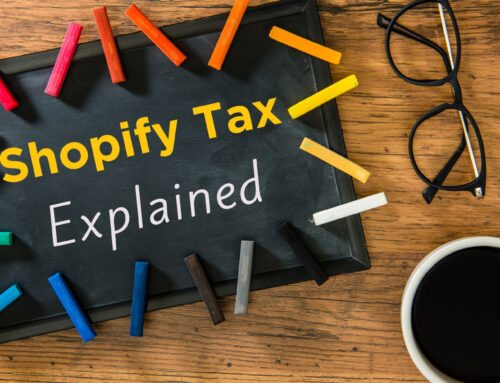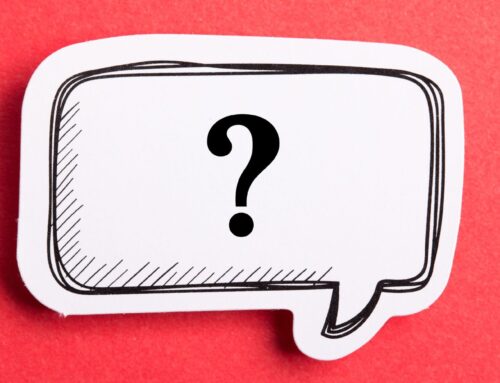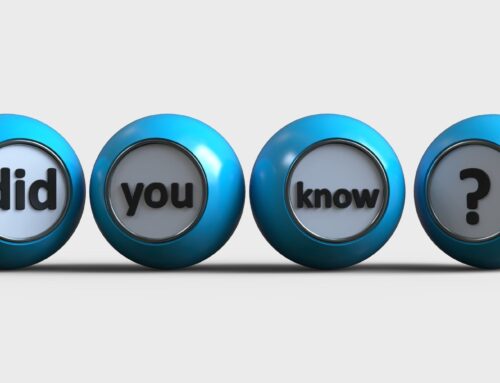
If you are a Shopify seller you may feel like you’re stumbling around in the dark when it comes to the topic of sales tax. If that sounds like you, you’re not alone! I often hear from Shopify sellers who worry about whether they are supposed to be registering to collect sales taxes and how they’ll know if they have economic nexus in other states. Let me assure you that understanding sales tax doesn’t have to be scary. Keep reading or watch my video linked below and I’ll shed some light what every Shopify seller should know about economic nexus.
What is nexus?
Let’s start with a definition to better understand the term “nexus”. What is nexus in the United States? Well, the fancy definition of nexus is the level of connection between a tax jurisdiction (such as a state) and an entity (such as a business like yours). The simple definition of nexus is whether you have met one of the requirements to collect sales taxes in a state or jurisdiction.
There are two different types of nexus: physical nexus and economic nexus. Take a look at some of the requirements for each in the chart below.

Physical nexus means that you have a physical presence in the state. Economic nexus refers to a seller being based in one state and selling into other states. When it comes to economic nexus rules, the rules are different for every state and the rules change on a regular basis.
Shopify Seller Challenges
As a Shopify seller, you have specific challenges. Shopify collects sales taxes only after you set it up. Shopify does not remit sales taxes for you and Shopify sellers have the burden of keeping up with sales taxes.
Economic nexus thresholds
Let’s take a closer look at economic nexus for Shopify sellers. When it comes to economic nexus, each state has minimum thresholds and you must meet the minimum thresholds to be subject to collecting sales taxes in a given state. The thresholds are based on transactions and that refers to the total number of transactions. There’s also monetary threshold and that refers to the dollar amounts of the total sales made in the state.
So how do you know what the state economic nexus thresholds are? The best source that I have found is from Sales Tax and More. If you go to their website [linked here], look for the state tax charts and matrices and then look for the economic nexus thresholds for sales tax. When you click on that link, it will download a PDF document for you that will list all of the states and everything that you need to know about economic nexus thresholds for each state.
In my video, I go over a few examples with you from that chart of the economic nexus thresholds for sales tax. To watch me talk through a few examples, click the following link: [2:57]
New Shopify sellers
What if you’re a new Shopify seller? Do you have economic nexus? No, you don’t. That’s because you haven’t made any sales into other states. Until you make sales in other states and until you meet the thresholds in those states for economic nexus, you don’t have to worry about registering to collect sales taxes until you have met the economic nexus rules in a given state.
Here’s an important tip: You should not register to collect sales taxes until you meet the economic nexus thresholds in a state.
How to look up your economic nexus in Shopify
So how do you know if you meet the economic threshold? From Shopify, go to the Settings icon and then select Taxes and Duties and then select United States.

You may then see something like the the example below under Manage Tax Liability. Here is says, “Based on your store’s data in Shopify, you may need to start collecting taxes here.” If you see that, then click Show All Liabilities.

Then you’ll see the states in which you may have economic nexus. Here’s an example of what that could look like.

In this particular case, we see Illinois and Georgia. Notice for the state of Illinois, total sales were $30,974 and the monetary threshold is $100,000. So, based on the monetary threshold, economic nexus hasn’t been met. However, for transaction threshold, the seller has had 671 transactions and the threshold for the state of Illinois is 200. Since they met the transaction threshold then they have economic nexus in the state of Illinois.
Preparing for a nexus analysis in Shopify
Another way to know whether you have nexus and to do a nexus analysis is to run the finances “Total Sales” report from Shopify for a desired date range. It’s usually year to date or for the last year. That will download a spreadsheet of all of your orders and then you’ll be able to sort or use a pivot table to get your orders by state and jurisdiction.

Consulting with a sales tax professional
If you think that you met the economic nexus in a particular state, I highly recommend that you consult a professional service who specializes in sales taxes. Sales tax and More is my go to expert. They specialize in sales taxes for the US as well as Canada. Another popular option is Avalara.
Keep in mind that for sales tax compliance, if you met the economic nexus, the next step is to register to collect sales taxes. So again, I highly recommend that you work with a professional service to do the registrations for you just to make sure that you are in compliance with all of the rules. Once you register, then you collect sales taxes, so you would have to set those up in Shopify to collect sales taxes. And then once you collect sales taxes, then you remit the sales taxes to the state.
Closing
I hope this addressed your biggest questions about what every Shopify seller should know about economic nexus. Remember to take a look at the chart of economic nexus thresholds for sales tax by state from Sales Tax and More to point you in the right direction for determining your economic nexus [linked here].
If you feel ready to work with an experienced and reliable Shopify accounting pro, click here to learn more about my services and see how we might be able to work together.
In the meantime, enjoy free access to plenty more resources, like my YouTube channel and my free Shopify Bookkeeping Blueprint. If you’d also like to connect with fellow DIY Shopify sellers and professional bookkeepers, come join my Facebook community. You can also follow me on Instagram to get all kinds of tips for DIY Shopify bookkeepers.
I’m here to help you, so I hope to see you soon online.




